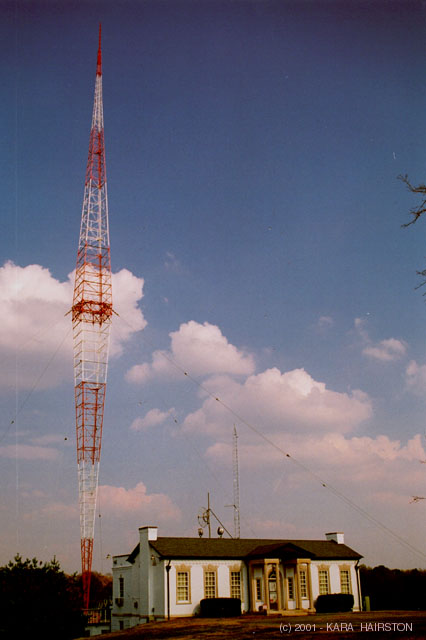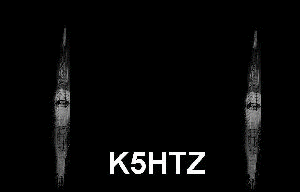
| MUSEUM OF YESTERDAY |


AND IN THE BEGINNING, THERE WAS SMOKE |
|
 |
From the beginning of civilization, man has had a desire to communicate his thoughts. We know that early cave dwellers used a medium called hieroglyphics to convey information. Later, as languages developed, various forms of communication were established. Monks, as early as the 11th Century, produced written documents intended to store and spread information. By the time that we were exiting the Dark Ages, inquisitive minds began to think in terms of both communications and scientific experimentation. Early figures in this movement began experimenting with principles of Physics that were yet to be fully understood. This unleashing of scientific discovery led to a progression of experiments and inventions that eventually gave us many of the fundamentals of modern science. |
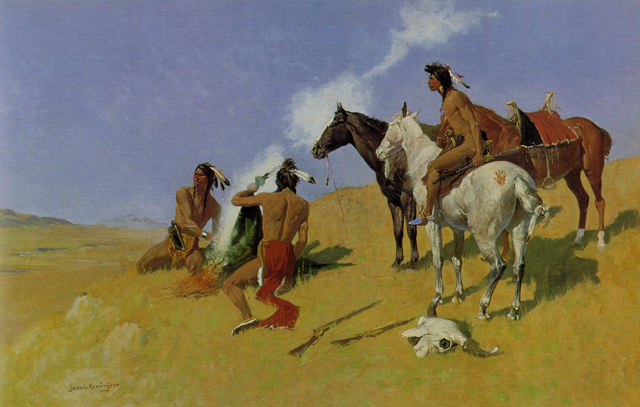
At the beginning of the Nineteenth Century, experiments carried on throughout Europe, had revealed the forces of magnetism and the early attempts to harness electricity. While the practical application of these discoveries was years off, the foundation had been laid for later inventions that would revolutionize communications. In that same period, however, people were still in need of visible means of communicating at greater distances. This became especially critical as warfare developed, and railroads came on the scene.
As early as Christopher Columbus' discovery of the New World, it was found that Native Americans had mastered the technique of short distance signaling by the use of patterned releases of smoke. In the 1792 Napoleon Bonaparte needed a means for signaling across France, in order to convey military instructions to his armies, and this need was met through an invention of a Frenchman named Claude Chappe. Chappe's system utilized a series of strategically placed semaphore towers across the French countryside. Each tower was in line-of-sight of the preceding and following tower, so that signals could be conveyed by operators moving the arms of the semaphore in order to spell out messages. The system worked well except when weather conditions or darkness obscured the line of vision between towers, and even simple messages took a great deal of time to transmit across the system since each tower had to be hand programmed in order to relay the message to the following tower.
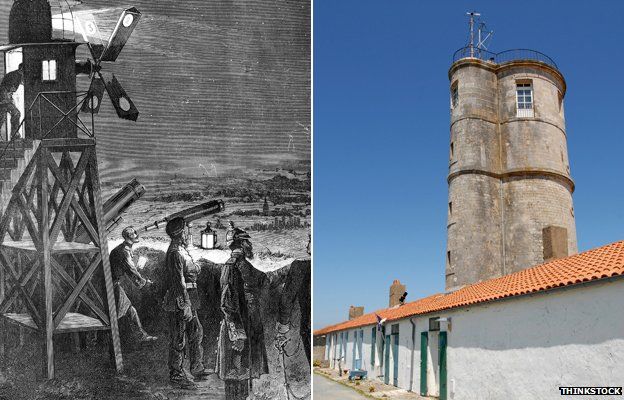
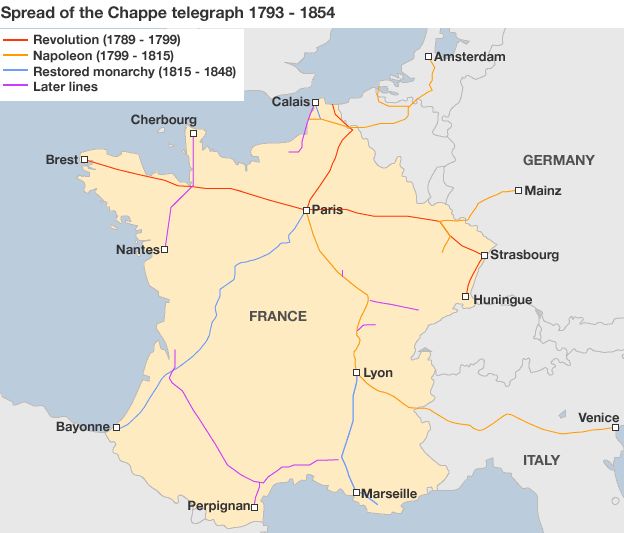
The early 1800s saw a proliferation of railroads on both sides of the Atlantic. Since trains moved at much greater speeds than did wagons and horseback travel, there needed to be a means of communicating between train terminals and the moving trains themselves. The railroad industry was the first "business" entity to go looking for a more modern way of communicating. In the early days of railroading, electricity had not yet developed into a usable state, so mechanical means were needed. The railroads invented their own system of signaling using track-side poles that could be seen by oncoming trains. This was called Semaphore signaling, after Chappe's term for the French visual telegraph. Today the term "Highball" is still used to express clearance given to a train to proceed at maximum allowable speed. Seen below is an early semaphore tower that utilized a series of balls to signal to the engineers of moving trains.
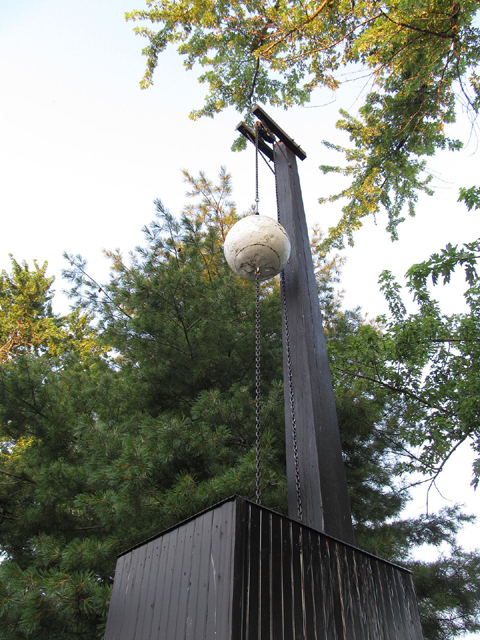
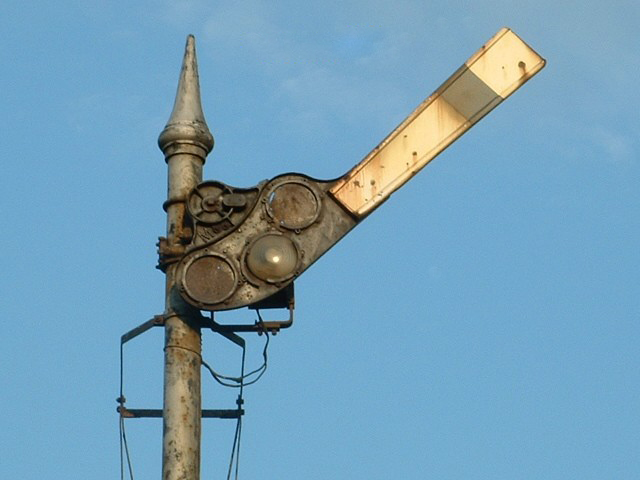
By the mid 1800s. electricity was now somewhat well understood. Inventors and scientists all over the world were experimenting with the application of this new miracle with the hope of harnessing it for lighting, operating mechanical devices in home and industry, and eventually to improve methods of communications.
Samuel F. B. Morse was, however, an unlikely candidate for recognition as a scientist. Morse, whose background was as an artist and politician, stumbled across a method to revolutionize communications. Taking some technology from the Von Summering system, Morse devised a simple method of sending alpha-numeric characters with a simple binary code involving on and off bursts of electricity of different durations. With this system, it was possible to send messages using only two wires. Eventual networks of the Morse system still only required a maximum of three wires for send and receive.
Morse further discovered that his simple on-off bursts could be easily recognized by telegraph operators, which eliminated the need for any translation equipment as was the case with the Von Summering system.
Once Morse had demonstrated his new invention to the moguls of the railroad industry, within a year, telegraph lines began to string up between towns served by the already existing railroads. Stationmasters and dispatchers could now share critical information between locations and even between railroad companies. Soon, there was also a demand for the transmission of non-railroad messaging, and this brought about the formation of Western Union, America's first telegraph company. Railroad employees were routinely trained in the use of Morse Code, and many of them drew dual salaries as both railroad employees and Western Union operators.
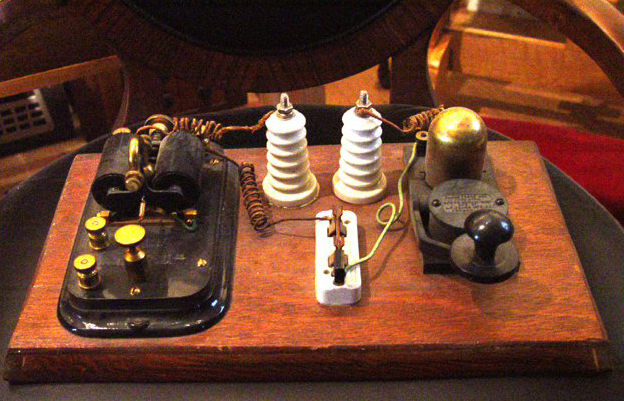
A typical Morse Code sending and receiving station apparatus used by the railroads.
Having reached this point, we should now have a basic understanding of the history that led up to the era of wireless communications. Obviously, the next big scientific breakthrough would be the discovery of the means to transmit telegraph messages without the use of wires.
But before we move on to that phase of communications history, we need to look at some of the other technology that would eventually contribute to the ability to send radio waves between distant places. The coinciding inventions of both the phonograph and the telephone, played an important part in enabling what we have come to know as "Radio." Before moving on to the days of wireless pioneering, let's take a look at both the phonograph and the telephone in order to see what contributions they made to the eventual end product.
Copyright 2023, The Museum Of Yesterday


